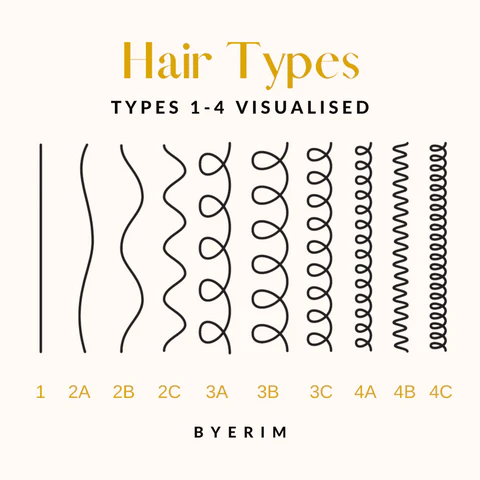The Big Picture of Texturism: How to Avoid Racist Comments About People’s Hair

A chart of hair textures which shows their visual differences. The chart is not one size fits all and the actual look of these hair textures may vary.
I was born black, something I couldn’t change. I knew early on that certain people viewed me differently, a bad different. At the age of 4, I got my first relaxer and I continued to get them until I was 12. I had no choice in the matter, but I never complained because I felt like it made me normal.
Many black and brown women have had these same feelings, and some decide that their natural hair isn’t for them, while others learn to love and embrace their hair. Although the natural hair movement is becoming more popular now, there are still so many people who deal with stares when they wear their hair in the state that it grows out. Many black people still believe that straighter hair is superior, but we must ask ourselves, where did these beliefs originate?
According to Forbes, texturism is the discrimination faced by people with coarser hair textures. Andre Walker created the hair typing system we use today to classify hair textures and help people properly care for their hair. Hair typing is helpful to people with curly and coily hair, but the system we know today originated from something much darker. Long before Andre Walker created the chart we know, practices such as the apartheid hair test, which said if a person could keep a pencil in their hair while shaking their head, they could not be classified as white, were put in place to separate people of color from white people. The products of these systems are still being seen today in many ways.
I have had the luxury of going through school without dealing with rules that prevented me from embracing who I am by using my hair, but this is not the case for some. For example, in 2017 two black girls who attended a predominantly white school were reprimanded for wearing their hair in braids, which they wore to feel closer to their blackness. They were told their hair was a distraction and received several harsh punishments, which were later reversed. These incidents occur more often than one would think and not just to students who wear braids. Students have been reprimanded for wearing their hair in its natural state and told that they need to straighten it chemically, a process that can cause severe burns to the skin and put women who use them at higher risk of uterine cancer. Discrimination does not go completely unnoticed, and it deeply affects some people.“ ”
Freshman Kenia Braud has been natural her whole life and says that she feels like she is treated differently based on what hairstyle she has.
Experiences like these are common and sometimes they can be extremely hurtful. “At the time it made me angry because my bun wasn’t any different from hers,” she said.
Sometimes the comments people make aren’t meant to be hurtful, but they can still have that effect.” The first time my classmates saw my hair straightened I received so many compliments about how long my hair was, and it opened my eyes to how little people knew about textured hair,” said Braud. “These are only things that happened recently. I’ve been dealing with this type of thing my whole life”.
Hair discrimination is experienced by children as young as five and although the comments may not seem serious to the people making them, they can affect the person on the receiving end for their entire life. No one can control the way their hair grows out, but everyone can control their words and actions. It’s important to have knowledge of different cultures and experiences because you may say or do something offensive without even knowing it.
